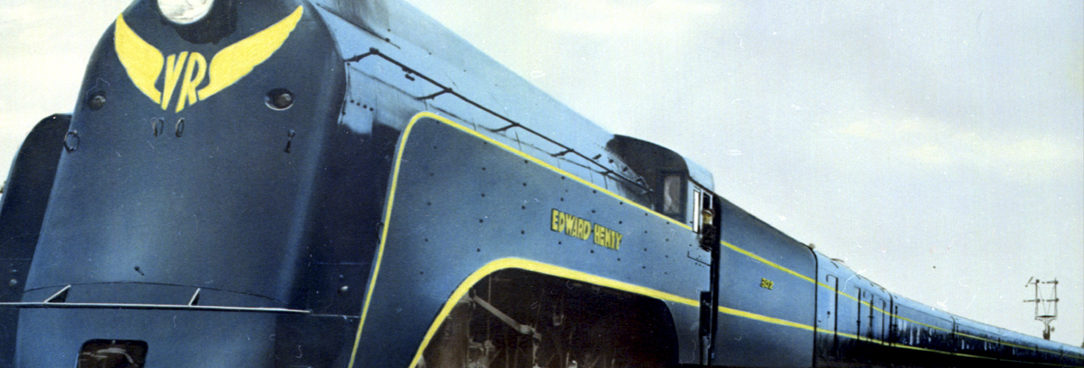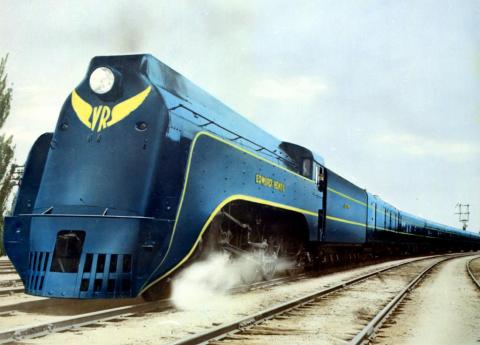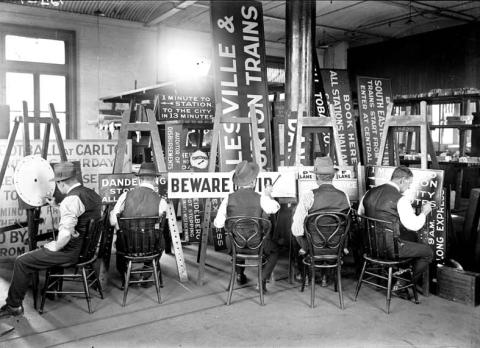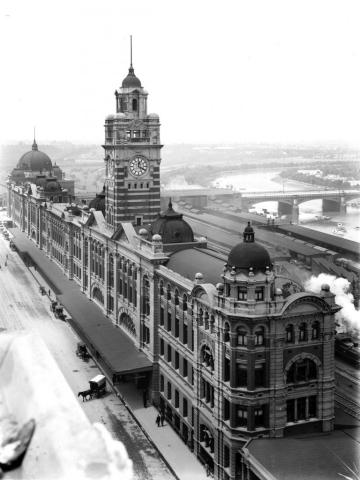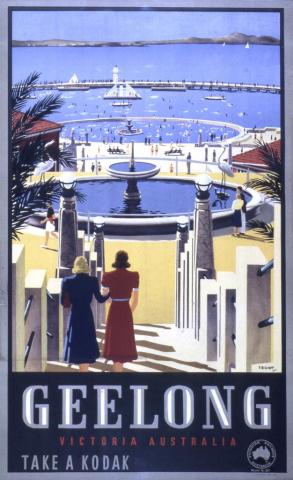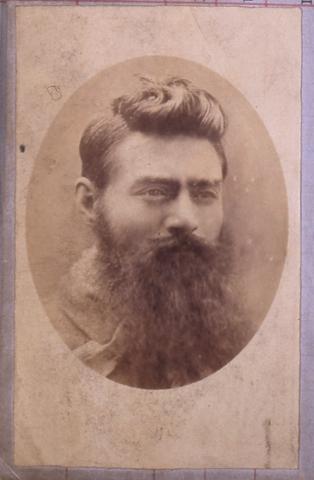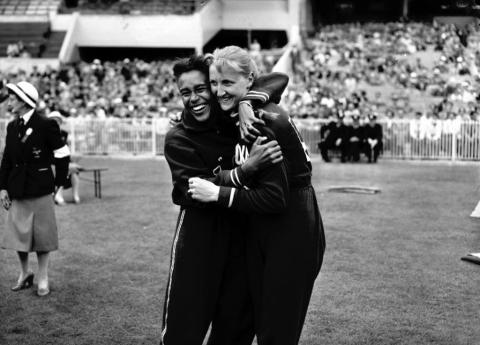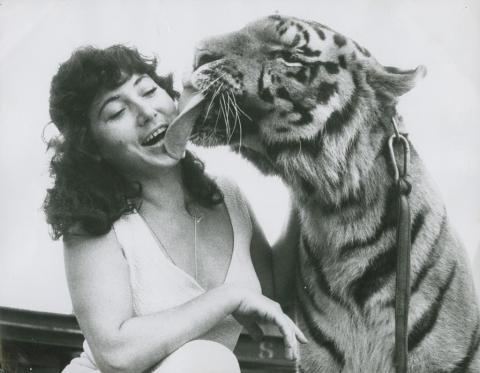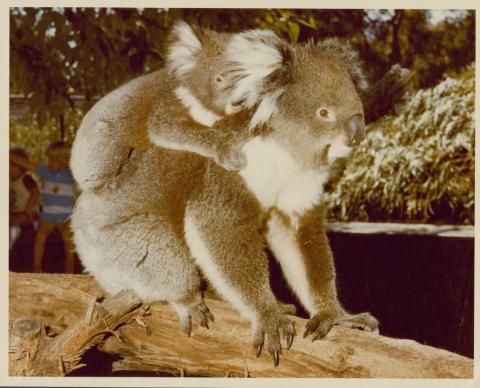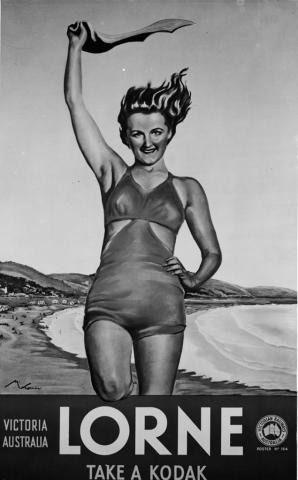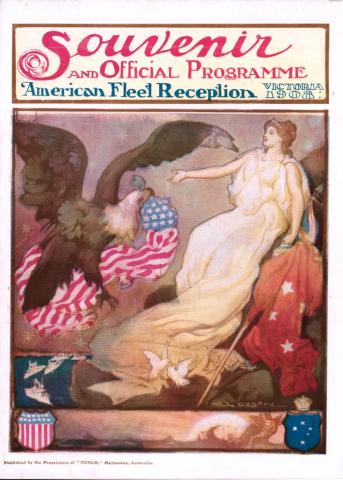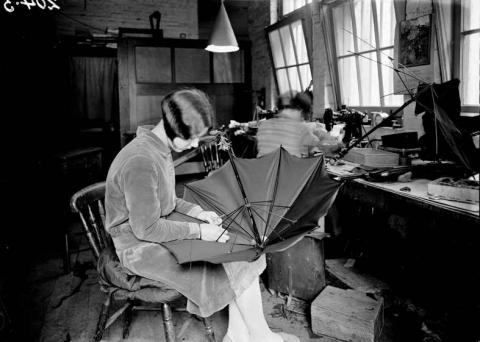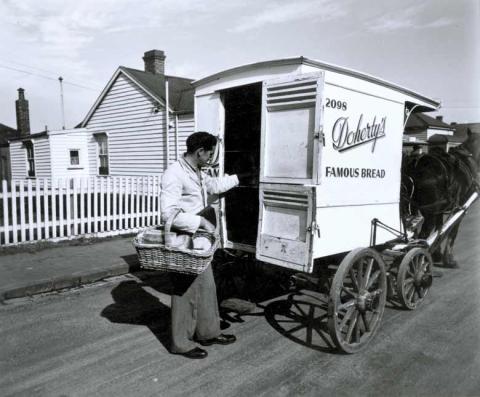
Author: Asa Letourneau
Online Engagement Officer
Spend some spare time putting together these puzzles of the archives. You’ll find two levels of difficulty initially and once you open the puzzle from the links provided you can also choose much harder versions - if you think you’re up for it!
Faster than a speeding bullet
In times of isolation it’s comforting to rely on the staying power of some tested icons. In this puzzle we celebrate the age of the modern locomotive. The all-metal, air-conditioned, high-speed, express Spirit of Progress train ran from Melbourne to Albury, and later to Sydney. It was declared one of the fastest passenger trains in the world, and Australia’s first modern passenger train, back in 1937 when it was first introduced.
Click here for the 63 piece puzzle.
Click here for the 300 piece puzzle.
And learn about the man behind the train, Sir Harold Winthrop Clapp, on our blog here.
Attention to detail
The devil is definitely in the detail, no more so than in this sterling example of Victorians at work. These sign writers worked for the Victorian Railways, hand painting everything from the railways warning signs to timetable changes.
Another puzzle or perhaps another skill to take up?
Click here for the 63 piece puzzle.
Click here for the 300 piece puzzle.
And view our gallery of other Victorians at work here.
Monumental Melbourne and the golden days of tourism
This offering highlights the iconic and aesthetically pleasing aspects of your State archives. Enjoy completing the magnificent architecture that is Flinders St Station and take a holiday in your own imagination to picturesque Geelong.
Click here for the 63 piece puzzle.
Click here for the 300 piece puzzle.
Flinders Street Station was built in 1910, and ever since it has been a cherished city landmark.
Learn more about the building, and the streets of our great City of Melbourne through our online exhibition Streets of Melbourne here.
Click here for the 63 piece puzzle.
Click here for the 300 piece puzzle.
Percy Trompf did the artwork for this, and many other tourism posters commissioned by the Victorian Railways back in the 1930s.
Search our collection for similar posters and other Railways photographs here.
The famous and the infamous
History provides us with a smorgasbord of colourful characters, from criminals and bushrangers to sporting heroes and everything in between. Here we have Ned Kelly and some long jump superstars from the 1956 Melbourne Olympics.
Click here for the 63 piece puzzle.
Click here for the 300 piece puzzle.
Did you know, we hold more Ned Kelly records than any other archival institution in the world?
Learn more about our Ned Kelly historical collection here, or learn about the life and death of Ned through our online exhibition here.
Click here for the 63 piece puzzle.
Click here for the 300 piece puzzle.
These long jump stars are the 2nd placegetter Willye White from the USA and winner Elzbieta Krzesinska from Poland. Here they share a hug after the competition.
Discover more stars of sports in our photographs from the 1956 Olympics here.
More jigsaws for your pleasure
Now that you’ve conquered the jigsaws of Victoria’s archives, why not try some of our other favourites:
- Monash University Library's jigsaw collection
- NSW State Archives jigsaws and puzzles
- National Library of Australia jigsaws from Trouble in Surf and the First Fleet art of George Raper
- ALIA jigsaw puzzles while you're at home
- Yarra Plenty Local History jigsaw planet
- Eltham Local History jigsaw planet
- Yarra Libraries jigsaw planet
- Central Coast Library Service NSW jigsaw planet
Seen any other great online jigsaws from Australia's cultural orgs and archives? Tweet us so we can add to this list! @PRO_Vic
But wait there’s more!
We were so pleased with the response to our initial 6 puzzles we thought we’d give you 6 more.
These two photographs come from our Melbourne Harbour Trust collection. The Trust took photos of more than just the ports – as evidenced here. They also took photos that promoted Melbourne as a tourist and business destination and documented events in which staff and Commissioners were involved. Among the photographs are animals of the circus, showgrounds or sanctuaries
Click here for the 63 piece puzzle.
Click here for the 300 piece puzzle.
Click here for the 63 piece puzzle.
Click here for the 300 piece puzzle.
Remember holidays?
The 1920s and 30s have been dubbed the Golden Age of poster design in Australia. This was partly due to the efforts of the Victorian Railways and the Australian National Travel Association (or ANTA) to promote tourism and outdoor recreation during this period by commissioning posters from the best commercial artists of the day. Search our collection for similar posters and other Railways photographs here.
The most popular and well-known artists employed by the tourism agencies at this time were Percy Trompf, James Northfield and Gert Sellheim. These three artists met regularly at the Art Training Institute in Melbourne where they taught graphic design and poster art. Tom Purvis, an English designer who also worked for ANTA during this period, noted that ‘a good poster should not puzzle people, it should be like a boxer’s punch - straight, hard, and quick - and should deliver its message in a flash’. The outbreak of World War II led to a suspension of the demand for travel posters. After the war, colour photography and screen-printing gradually replaced commercial artwork and zinc plates. By the late 1950s the strong images and simple text that typified poster design before the war had virtually disappeared.
Click here for the 63 piece puzzle.
Click here for the 300 piece puzzle.
Fleet Week
In the last years of his presidency, President Theodore Roosevelt sent the US Navy on a world tour from December 16, 1907 – February 22, 1909. The sheer logistics of travel and refuelling points made the voyage of the ‘Great White Fleet’ an impressive exercise.
The voyage of the Great White Fleet proved to be a huge public relations coup for President Roosevelt and the US Navy. Wherever they went, huge crowds greeted the arrival of the Fleet, with formal dances, fetes, games, receptions and other events prepared for the tens of thousands of sailors and officers.
Victoria pulled out all the stops for ‘Fleet Week’ and records held at PROV show the scale and scope of the welcome: newspaper articles, sixteen thousand maps, railway schedules, guidebooks and souvenir programs, printed and distributed to the ships’ crews to help them find their way around Australia’s biggest city.
Click here for the 63 piece puzzle.
Click here for the 300 piece puzzle.
Victorians at Work
From jobs that no longer exist to services no longer required, our final two puzzles showcase the delicate handy work of making umbrellas for the Victorian Railways and a bread delivery cart of the past.
Click here for the 63 piece puzzle.
Click here for the 300 piece puzzle.
Click here for the 63 piece puzzle.
Click here for the 300 piece puzzle.
During the 1930s and 1940s, bakeries became more mechanised and delivery costs increased. This saw the growth of over-the-counter sales through grocery stores, and heralded an end to home delivery.
Material in the Public Record Office Victoria archival collection contains words and descriptions that reflect attitudes and government policies at different times which may be insensitive and upsetting
Aboriginal and Torres Strait Islander Peoples should be aware the collection and website may contain images, voices and names of deceased persons.
PROV provides advice to researchers wishing to access, publish or re-use records about Aboriginal Peoples
